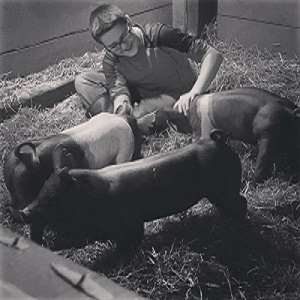By Julie Thelen
Even with winter weather sticking around, many youth across the state begin looking for their 4-H hog project animal. Caring for a hog requires forward thinking and creating a plan of how to see your project through to the end. In addition to the requirement of selecting the animal, there is also a financial burden of caring for an animal through the duration of your project.

This three-part series from Michigan State University Extension will review important swine project content and address three main topics: preparations for your market hog, estimating costs of care and hog selection. These tips and tricks will help you be more prepared for your 4-H swine project experience.
This first article starts at the beginning: preparations. As you make plans to raise and care for a hog, think through all of the needs of your project. These details will help make the process of caring for swine easier. Here are a few examples of needs for your project.
- Financial burden: Raising and caring for hogs requires an input of funds to purchase and provide feed for the animal. Learn how to be better prepared for the costs through the “Planning for your 4-H swine project animal: Estimating costs” article.
- Fences: Hogs are curious and will tend to explore all perimeters of your fence. Fences should be secure and well laid out to allow for human access to the pen and containment of pigs that may try to dig underneath. Wire mesh panels make a good fence; supports are needed every 4 to 6 feet. Pigs will naturally push and root on your fence, so you will need to check the perimeter frequently noting the condition of the bottom 2 feet.
- Feed storage: The feed should be stored indoors where it is dry and safe from rodents. If moisture is a concern, pallets are a great way to keep feed bags off the ground and dry.
- Bedding: Keeping your swine project well-bedded provides them a dry location for lying down and can help keep your animals healthy. Animals use energy to stay warm or cool, so using bedding to keep your animal warm or cool reduces the energy used and will help your swine project grow quicker. Make sure you have bedding ready before your animal arrives and that you have a plan to maintain a clean area for the animal.
- Water supply: Water is the single most important nutrient for animals. Clean, fresh water is needed on a daily basis for a successful swine project. When you get a pig home, make sure to show it where the water is and, if needed, use wire to keep lids of water systems open until the pig is large enough to open it on their own.
- Animal companionship: Many animals do not like to be alone. Finding an animal companion, whether a second pig or another species, is important for keeping animals calm. If at all possible, try to have a plan to raise your animal in a small group, having at least one animal within a visible distance from your project animal.
- Animal selection: Finding the right pig for your fair or exhibition can sometimes be difficult. Pigs need to weigh within certain weight requirements to be exhibited at some events, which adds an additional obstacle when planning for the future. Reviewing some of the tips in the “Planning for your 4-H swine project: Hog selection” article prior to selection could be useful.
Although there are many challenges to raising and caring for animals, it is also very rewarding to raise pigs. Resources like the 4-H Swine Project Snapshot can help provide recommendations for content learning and discovery of new opportunities. Additionally, the newly revised “Your 4-H Market Hog Project” book, available soon through the MSU Extension Bookstore, is a great resource for 4-H youth.
Source: msu.edu